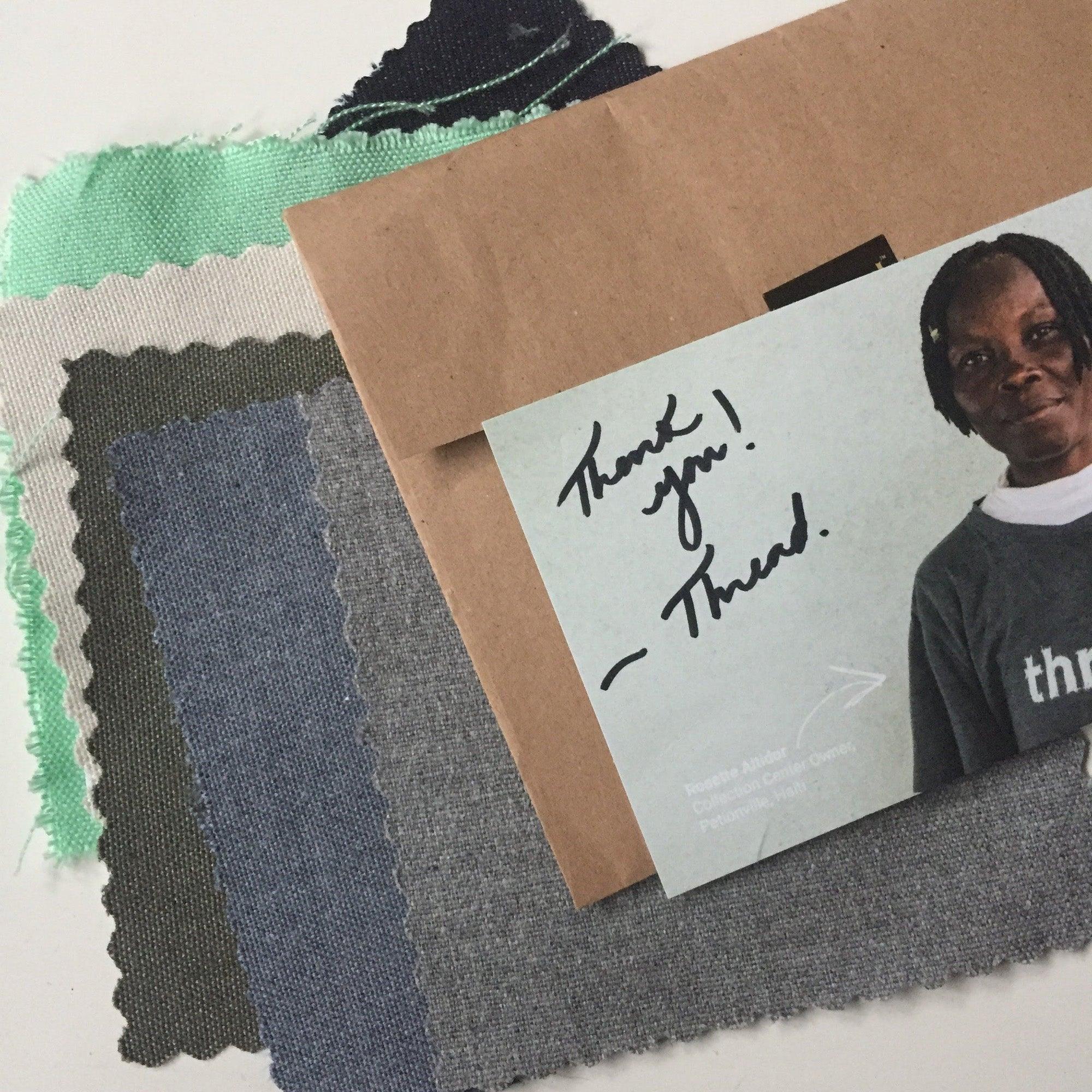FREE SHIPPING ON ALL US ORDERS OVER $150
FREE SHIPPING ON ALL US ORDERS OVER $150

Thread by Thread, a Revolution
January 19, 2018 3 min read
Fashion bloggers and street style mavens the world over have extolled the virtues of mixing high and low, designer clothes with main stream and thrift items. And when it comes to kids’ clothes, style has made big strides, with fashionable choices available at democratic prices at Old Navy, Target, etc. But the sad fact is, most of the “fast” or “low-end” fashion comes at a very high cost to our environment. Think petroleum-based fabric blends that end up in landfills after the cheap fabrics give way, toxic dyes that end up polluting waterways and reservoirs, and opaque operations that mask shady workplace practices and unfair compensation.
What’s more, the global mindset about the acceptability of fast fashion means that people keep their clothes for shorter periods than ever before...by some estimates, only six months. And for growing kids, it’s probably even less (though we can’t find any since to back that up! Just a parent’s intuition.) The concepts of mending and making do are largely fossils of a bygone era, before you could wander onto the Internet at 3 a.m. and order up a storm to replace whatever’s frayed, torn, or just not “working” anymore.
Here at Jackalo, we refuse to succumb to this consumerist apathy. We live in the most technologically advanced times in the world, with staggering global problems to solve. The potential to solve some of them--through fashion, yes--inspires us. The advances being made in fabric science means that clothing can be durable and stylish--even when worn by hard-playing, dirt-loving kiddos. In addition, there is a new generation of companies out there leading the way using transparent practices, with emphasis on responsible sourcing, creative reuse, and human dignity. In the words of Tim Gunn, we want to find ways to have it all and “make it work.”
We love to hear about what other companies are doing to find solutions for us all, and here are some of the ones that have inspired us:

Thread International was born during a trip to Haiti, when founder Ian Rosenberger, on a earthquake relief trip, had the germ of an idea to recycle Haiti’s plastic waste into fabric. Now Thread International boasts one of the most transparent supply chains in the world, with everyone from local waste collectors to the yarn sellers and fabric manufacturers in the States bring profiled on its website.

Know the Origin has been a beacon of transparency, including documentation of chemical-free fields, fair trade cooperatives, and encouraging smart farming practices of rotating crops and planting food alongside the pesticide-free cotton. (Photo credit: @knowtheorigin)

MUD Jeans not only fall well below the price range of most other designer denim, but come in the most au courant styles and washes. We are besotted with them, not only because they offer a unique “leasing” program, but because of their association with Spanish denim superstar Royo Textiles, which uses recycled and organic cotton in their denim and has a strong commitment to the environment and social responsibility. (Photo credit: @MUDjeans)
While Jackalo forms relationships with suppliers of sustainable fabrics, we’d love to hear about any companies that you think have values that align with ours. We’re all about getting out and exploring, whether it be a new park or a new idea, so share yours with us. Shoot us an email at hello@hellojackalo.com.


Find your perfect pants
TAKE THE QUIZ
A few quick questions to point you in the right direction. Plus, get $10 off your next order.
Unlock 15% Off Your First Purchase
Subscribe to Jackalo newsletter and get 15% OFF your first purchase! Plus, enjoy early access to new products and exclusive deals when you join our list!
By subscribing, you agree to theTerms of Service and Privacy Policy. You may unsubscribe at any time.